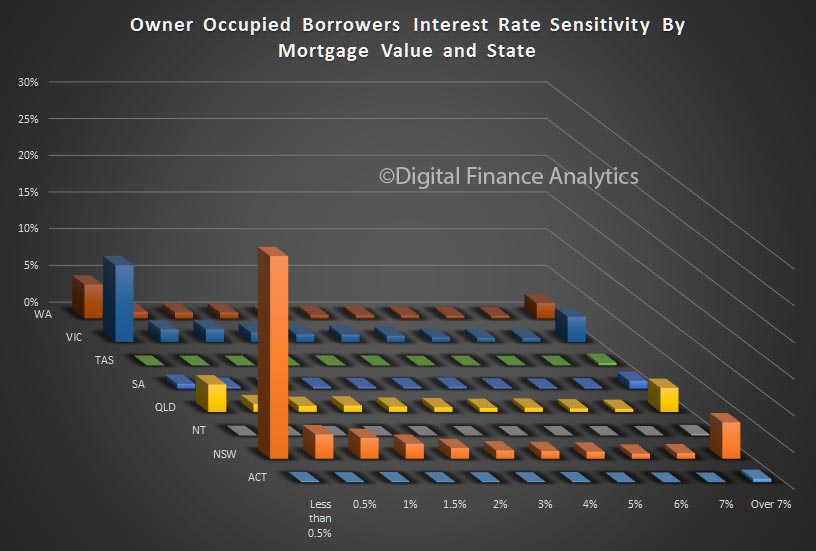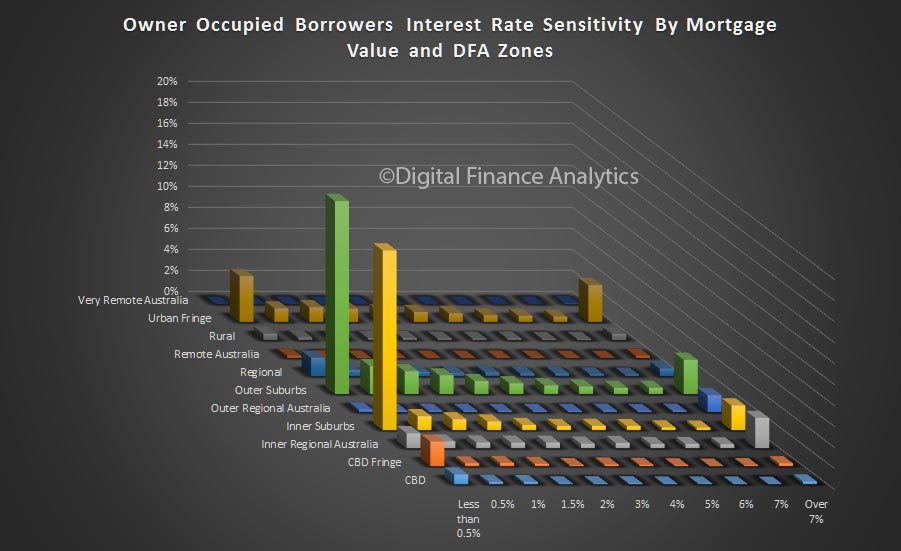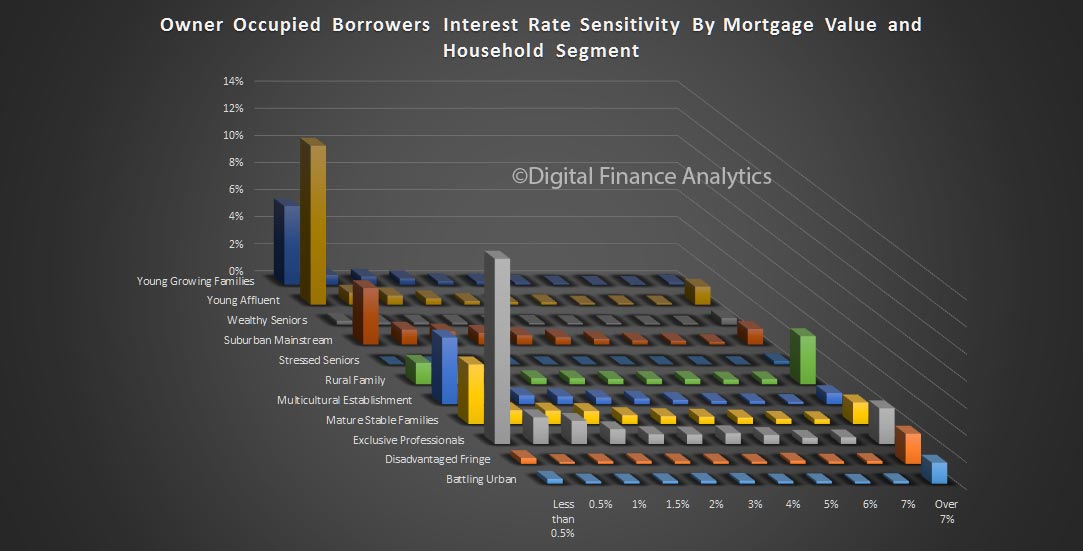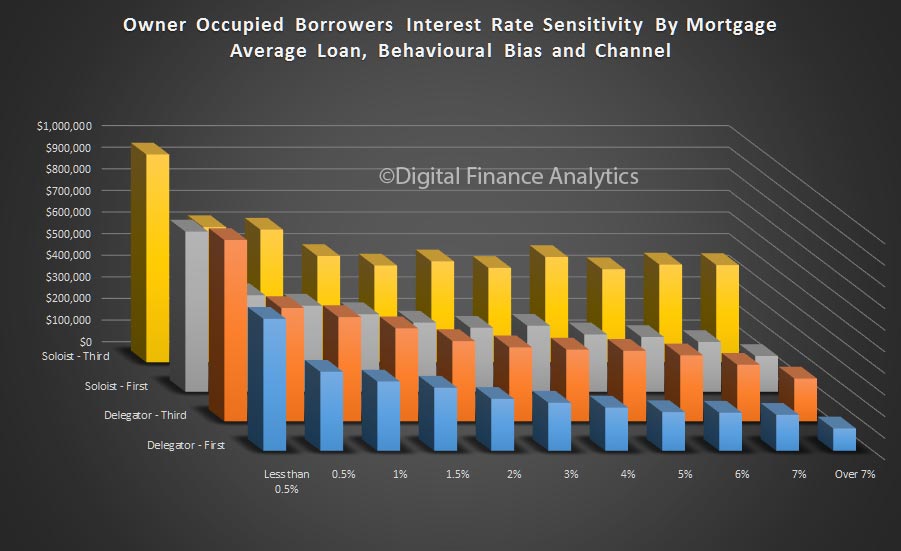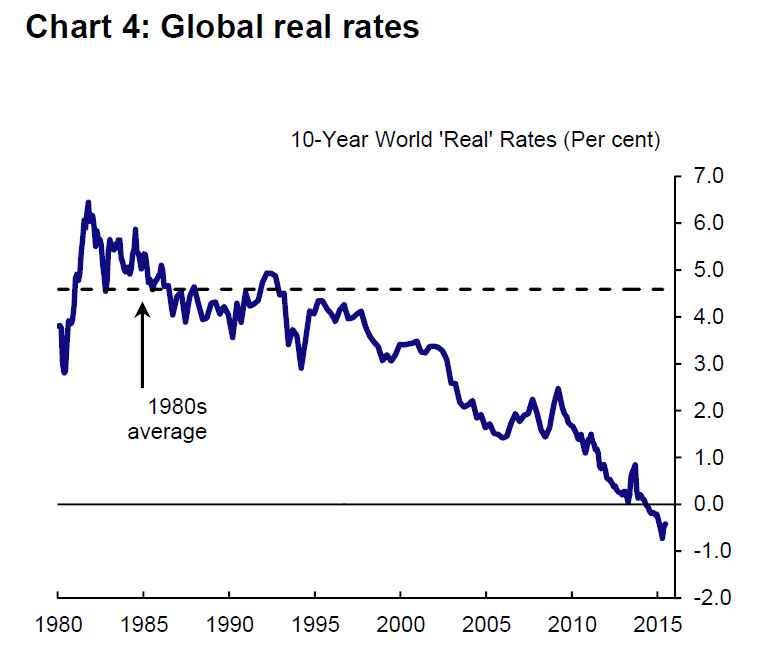An interesting working paper from the IMF was released today. Why Do Bank-Dependent Firms Bear Interest-Rate Risk? looks at the link between bank funding, floating rates and how this is transmitted to firms who borrow on variable rate terms. The paper concludes that banks do indeed transfer interest rate risks to firms, and this is especially so when banking regulation tightens.
I document that floating-rate loans from banks (particularly important for bank-dependent firms) drive most variation in firms’ exposure to interest rates. I argue that banks lend to firms at floating rates because they themselves have floating-rate liabilities, supporting this with three key findings. Banks with more floating-rate liabilities, first, make more floating-rate loans, second, hold more floating-rate securities, and third, quote lower prices for floating-rate loans. My results establish an important link between intermediaries’ funding structure and the types of contracts used by non-financial firms. They also highlight a role for banks in the balance-sheet channel of monetary policy.
Here is the full conclusion from the report:
Bank lending is in large part funded with floating-rate deposits. As hedging is costly, banks avoid mismatch with the interest-rate exposure of their liabilities, in part, by making floating-rate loans to firms. To establish this link between the structure of bank liabilities and the floating-rate nature of bank lending, I examine the cross section of banks. Banks with greater interest rate pass-through on their deposits hold more floating-rate assets: both loans and securities. In the cross section, these floating fractions are positively correlated with each other. I show that if banks were responding to demand for floating-rate debt from firms instead of their own liabilities, this correlation would be negative.
Moreover, while banks with more deposit pass-through hold more floating-rate loans, they quote lower interest rates for ARMs relative to FRMs. The combination of higher quantities and lower prices points to variation in supply rather than demand. I also present time series and historical evidence supporting the supply-driven view of floating-rate bank lending to firms.
This paper therefore highlights an important consequence of banks’ short-term funding: the potential for interest-rate mismatch. While standard models do analyze maturity mismatch created by short-term funding, they typically do not consider uncertainty in interest rates and interest-rate mismatch.
This paper shows that the structure of banks’ funding has important implications for the choices banks make about interest-rate risk on the asset side of their balance sheets. More broadly, my results establish an important link between intermediaries’ funding structure and the types of contracts used by non-financial firms. My results suggest that tighter regulation of banks’ exposure to interest rates might lead banks to pass on more risk to firms, which is particularly relevant given renewed regulatory focus on banks’ exposure to rates.
Bank-dependent firms, i.e. poorly rated firms and smaller firms, are more exposed to interest rates than firms with better access to capital markets. While these firms do use interest-rate derivatives to hedge this exposure, they do so only partially. I show that this exposure is a component of the Bernanke & Gertler (1995) balance-sheet channel of transmission of monetary policy. Banks therefore play a role in the transmission of monetary policy to firms beyond the usual bank lending channel; here the effect is based on existing rather than new bank lending.
Note: IMF Working Papers describe research in progress by the author(s) and are published to elicit comments and to encourage debate. The views expressed in IMF Working Papers are those of the author(s) and do not necessarily represent the views of the IMF, its Executive Board, or IMF management.


